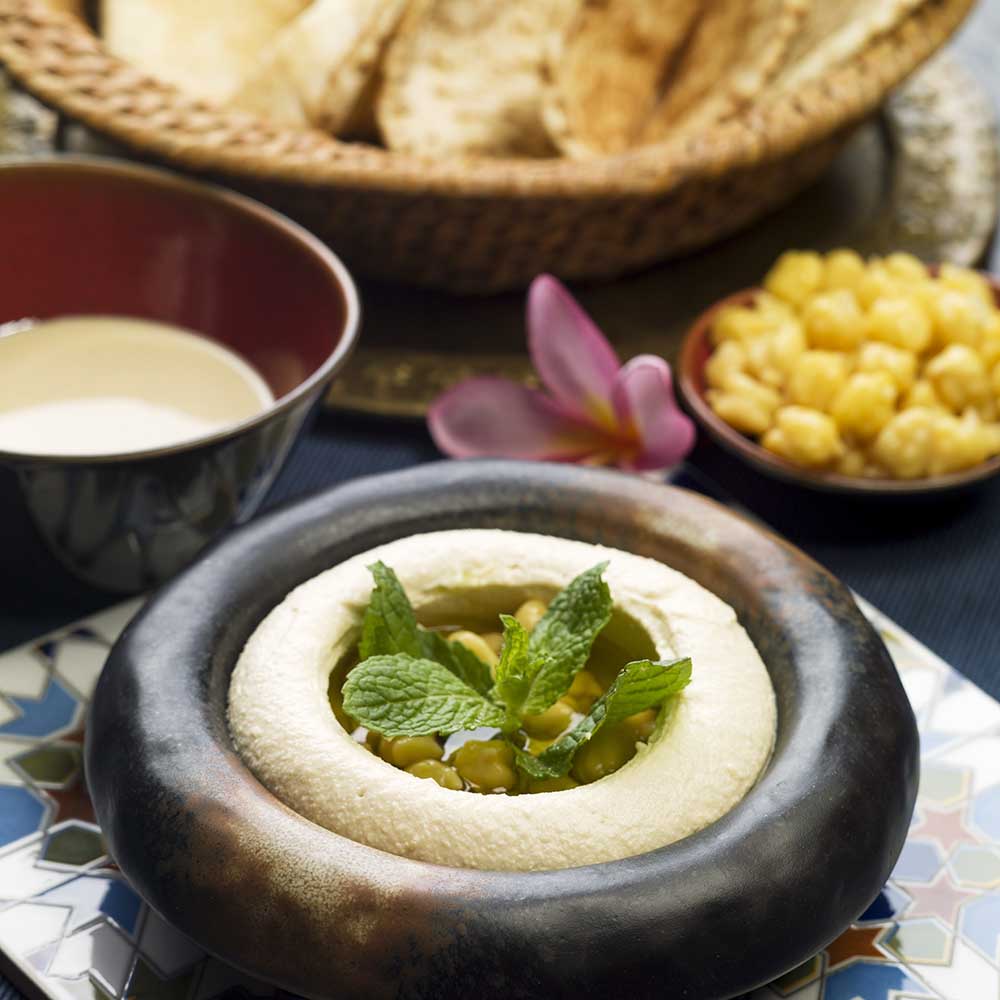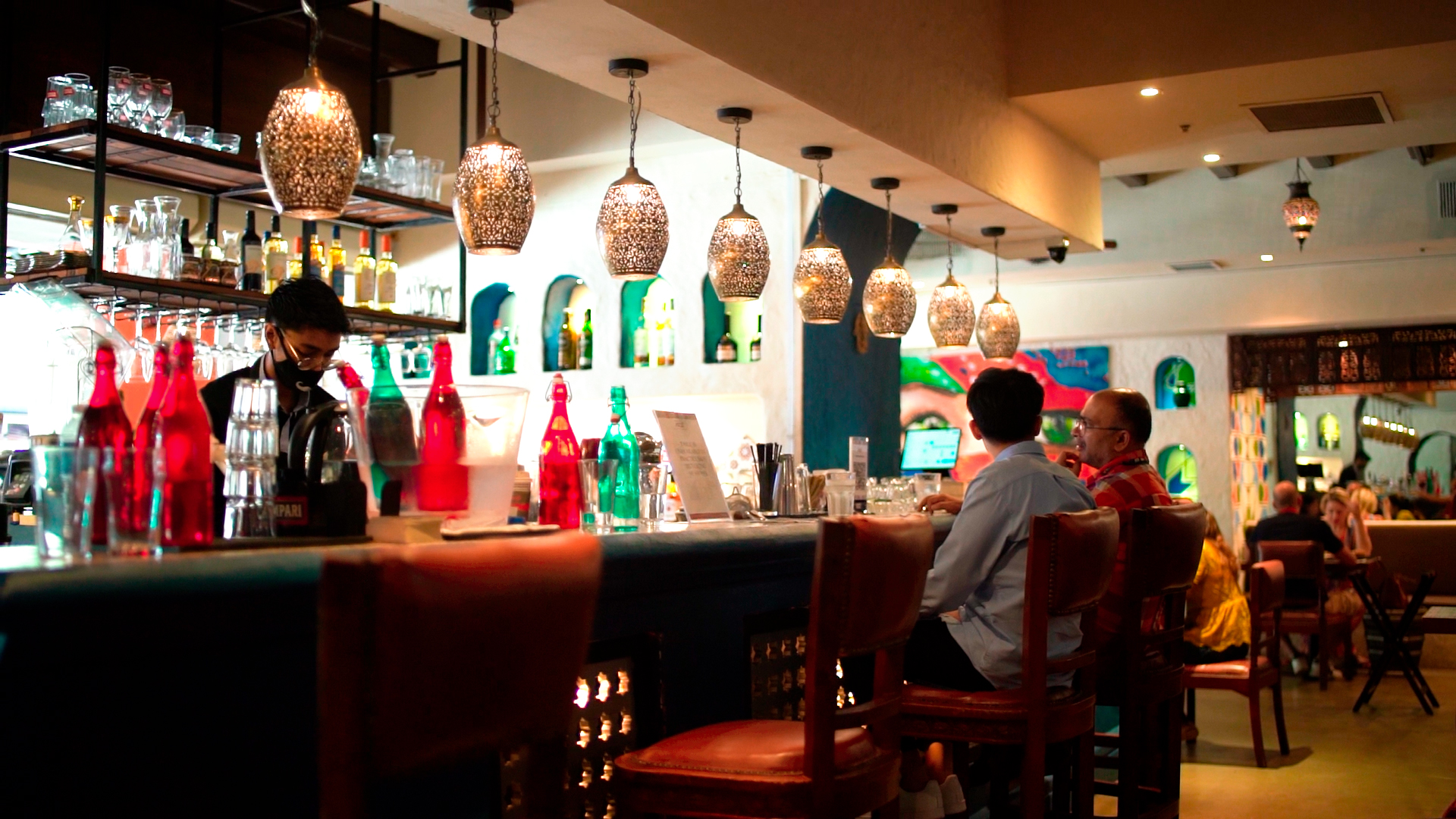Lebanon (officially known as the Lebanese Republic) is known for many things. It might be the smallest recognised sovereign state on the mainland Asian continent, but it sure packs a whole lot of fun. Its capital city of Beirut has long since cemented itself as the go-to spot for a vibrant nightlife. There, you can easily find bacchanalian parties and dancing going on all night long.
In the daytime, its position at the coastline of the Mediterranean sea gives the land a vibe similar to that of California — buildings overlook miles of coastline, palm trees line the streets, and mountains tower in the distance.
The Middle Eastern country also boasts a rich culture tracing back thousands of years, and archaeological sites are aplenty for history buffs out there.
All these points make Lebanon a gem for travellers, but of most importance is the one thing we all can’t live without: food.
Lebanese food: A history

Like most Middle Eastern food, Lebanese food is based on that of ancient Levant (a region that today includes Lebanon, Jordan, Syria, Palestine, and Israel). The influence of Levant can be found in the spices used in Middle Eastern cuisine, as well as in classic dishes Lebanon is famous for, such as hummus (a thick chickpea dip) and manoosh (flatbread). Unlike its neighbours, however, Lebanese food also carries the influence of its former colonisers.
The Ottomans, who ruled Lebanon for more than 400 years from the 16th century, introduced their love for lamb and strong, dark Turkish coffee into Lebanese cuisine. A classic Lebanese dessert, baklava, can also be traced back to the Ottomans.
Subsequently, Lebanon was colonised by the French, who introduced the Lebanese to a whole new assortment of ingredients. The French ruled Lebanon until 1946, when the nation eventually declared independence, but the French’s influence remains today in the Lebanese’s love for pastries and desserts. Today, French treats like croissants and custard flans are still popular in the nation.
Beyond the mark left by its colonisers and neighbours, Lebanese cuisine also has influences from other parts of the world. Beirut, was formerly known as the Paris of the Middle East and saw travellers passing through it with their own exotic delicacies for thousands of years.
Lebanon’s long history and diverse culture have all played a part in developing what is known as Lebanese cuisine today.
Ingredients

In most, if not all, their dishes, Lebanese food features a focus on herbs, spices, and freshly-prepared ingredients. The result is a cuisine known for its heady aromas, richness, and punchy flavours.
Common herbs and spices used in Lebanese cuisine include mint, parsley, oregano, allspice, garlic, cinnamon, and nutmeg.
Additionally, a core set of ingredients are central and unique to all Lebanese cuisine. These ingredients have come from the land that Lebanon is situated in as well as the influence from its history and neighbouring countries.

Some of the lesser known ingredients include sumac and za’atar. The former is a tangy spice that has an acidic flavour similar to that of lemon juice or sour plum; the spice also has a gorgeous maroon hue and as a result, is often used as a garnish to add a pop of colour to dishes.
The latter ingredient, za’atar, is a Middle Eastern spice blend that typically consists of za’atar (a wild thyme native to the eastern Meditterranean), sesame seeds, dried sumac, and salt; za’atar is typically used as a seasoning for all sorts of dishes including meats, roasted vegetables, and even dips.
Floral notes are also prominent in Lebanese cuisine, owing to their heavy use of rose water and orange blossom water. These two ingredients are most commonly used in Lebanese desserts.
Other prominent ingredients in Lebanese cuisine include pomegranate molasses (a reduction of fresh pomegranate juice), tahini (a paste made from ground sesame seeds), a variety of legumes and grains, as well as sauces like tzatziki (made from garlic, cucumber, and yogurt) and toum (a creamy garlic sauce). They also make use of some nuts and seeds, with pistachio being particularly common in their desserts.
A Lebanese meal

A Lebanese meal typically begins with an assortment of mezze, which are small plates and dishes to start out the meal. This is similar to the Spanish tapas, and they serve as appetisers before the mains.
A typical mezze comprises an elaborate variety of both hot and cold dishes. Some of the more common dishes include:
- Salads
- Dips (e.g., hummus or baba ghanoush — a eggplant dip)
- Kibbeh (meatballs made with ground meat and bulgur wheat)
- Kafta (balls of ground meat)
- Falafel (fried chickpea balls)
For mains, Lebanon’s most popular choice of protein is lamb, a remnant of the Ottaman’s rule during the 16th century. However, the nation also often uses seafood given that Lebanon is a coastal town bordering the Mediterranean sea.
One of the most popular Lebanese dishes is shawarma, where chunks of meat are skewered and roasted on a spinning vertical rotisserie or spit. This leaves the meat with a wonderful char that adds to the fragrance of the dish. The meat is then shaved off directly from the spit and served with flatbread. While the meat of choice is often lamb, other proteins such as mutton, chicken, turkey, beef, or veal are sometimes used as well.
Another popular dish is the moussaka, an eggplant- or potato-based stew which often contains ground meat. However, this dish can easily be made vegan or vegetarian as well. This dish is not specific to Lebanon but can instead be found across the Balkans and Middle East, with different variations.
With Lebanese savoury dishes being packed full of flavour, their desserts are no exception. Their liberal use of pistachio and rose and/or orange blossom water results in desserts that are sweet and florally fragrant. The baklava is one classic example, with layers of pastry stuffed with nuts and bound together by syrup that make for a dense, crunch, and sweet treat.
For those who prefer a lighter treat, try the middle eastern pudding muhallabia, a milk pudding scented with either rose or orange blossom water, and topped with nuts for a contrast in textures.
All in, Lebanese food is as versatile as it is tasty. If your wanderlust spirit is getting restless after not travelling for more than a year, do give Lebanese cuisine a shot for a small taste of the Middle East!
Taste of Lebanon in Singapore

Hungry yet? Pay a visit to Kazbar, a restaurant in Singapore serving up delectable Middle Eastern dishes helmed by Chef Kamel from Beirut. If you’re a foodie looking to try out Lebanese food or just need a new restaurant to impress a potential date, Kazbar is bound to have something for you.
Here, you’ll be able to experience the vibrant culture and colours that characterise the languid atmosphere of Beirut alongside some of Lebanon’s most famous dishes including kibbeh, baklava, and hummus. We promise, the food here is phenomenal and it will be a culinary experience like no other.
If you’re planning on staying home instead, takeout and food delivery services are also available. They also have curated various meal hampers and packages for you to recreate a gourmet gastronomic experience in your very own home.
Do note that the Kazbar is not halal-certified as they serve alcohol. However, their ingredients do come from halal sources. Additionally, Kazbar also has a variety of plant-based dishes for those who are vegetarian or vegan.
We might not be able to hop on a plane and fly to the Middle East right at this moment, but getting a taste of authentic Lebanese and middle eastern food right here in Singapore? Well, that’s the next best thing.
Join the conversations on THG’s Facebook and Instagram, and get the latest updates via Telegram.












